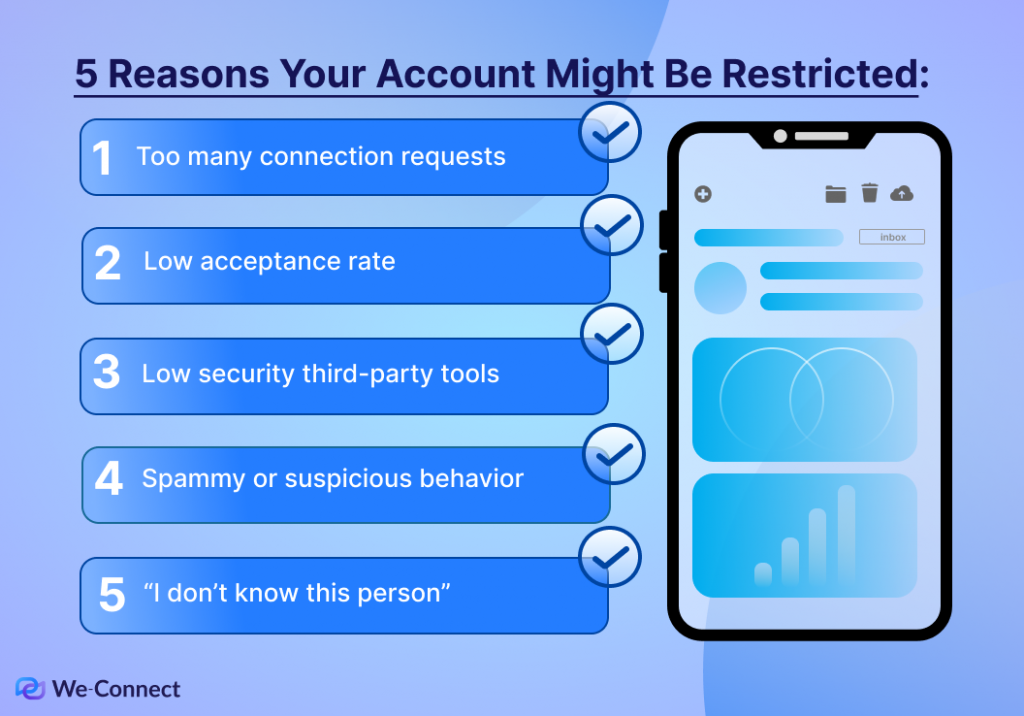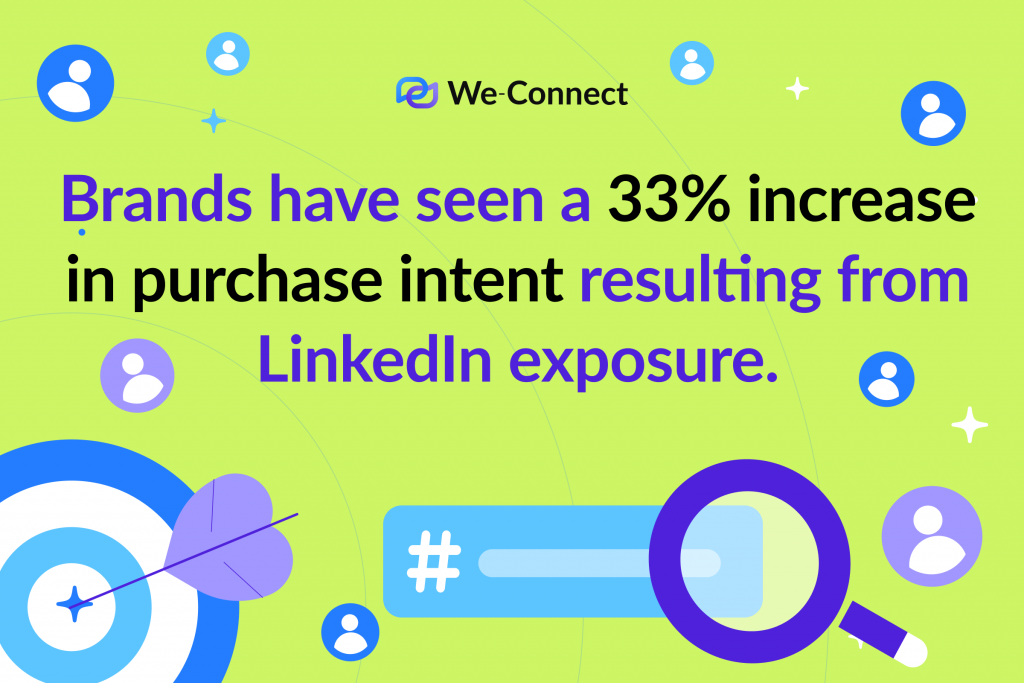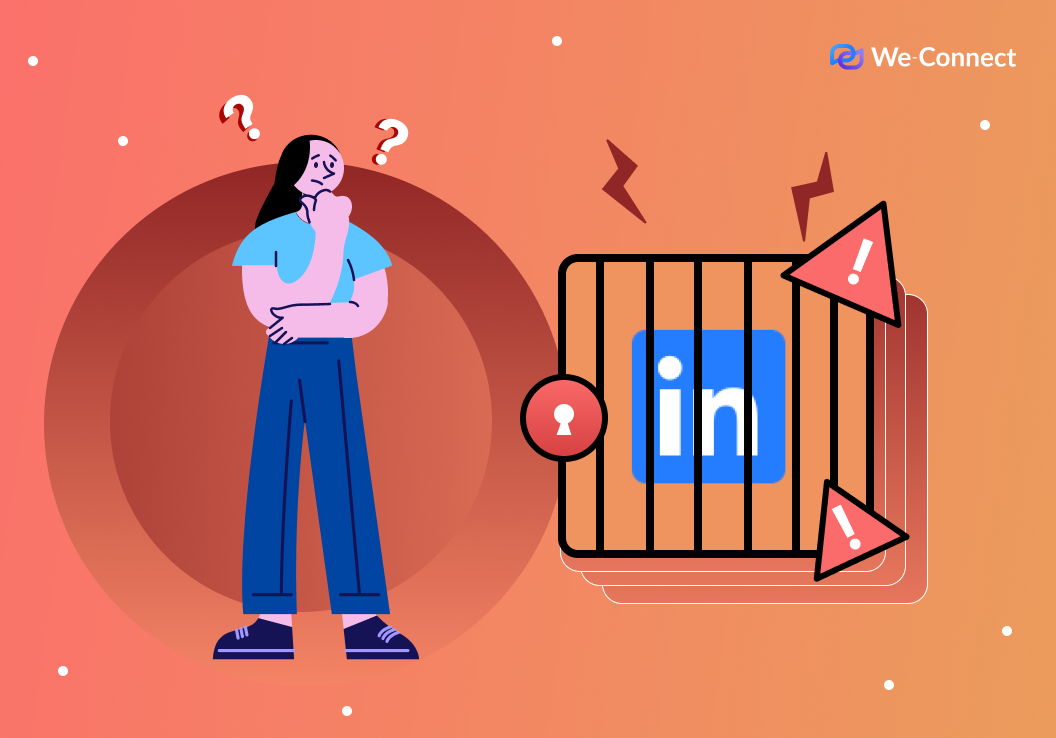Being locked out of your LinkedIn can be frightening. Especially if you’re using it as a main channel for lead generation, recruitment, or building a personal brand.
First things first, don’t panic. LinkedIn can restrict accounts for a number of reasons, and (most of the time) it’s only temporary.
In this article, we’ll cover everything you need to do to get your account back, as well as what you can do to prevent LinkedIn from flagging your account again in the future.
What Types of LinkedIn Restrictions Exist?
There are three types of LinkedIn restrictions. Depending on what type of restriction you receive, the steps to get your account back look a little different.
Here’s what they look like:
- Temporary Restriction: A temporary restriction on LinkedIn can last anywhere from a few hours to an entire week. The exact length depends on how many times your account has been flagged in the past.
- Identity Restriction: An identity restriction occurs when LinkedIn thinks you are pretending to be someone you are not. To overcome this restriction, you need to validate your ID.
Permanent Restriction: A permanent restriction is irreversiblen however, relatively uncommon. Permanent restrictions are reserved for those sending spam, violating content policies, or who continue to push boundaries with action limits.

Why is my LinkedIn Account Restricted?
So, your account has been restricted. You were probably logging on to check your messages, and boom, you see the infamous “your account has been restricted” pop-up.
If this is your first time seeing this message, you don’t need to worry. You can still get your account back – LinkedIn has most likely restricted your as a precaution.
Some of the common reasons why LinkedIn may have restricted your account include:
- You’re sending too many connection requests
- Low connection acceptance rate
- You’re using an unsafe LinkedIn automation tool
- Spammy/inappropriate activity is coming from your account
We’ll dive into each of these a bit deeper so you can avoid restrictions in the future.
1. Too Many Connection Requests
Growing a LinkedIn account too quickly is the most common reason for an account restriction. This is especially true if you’re using a new or revived LinkedIn account.
Think about your LinkedIn account as if it was an email inbox. Prior to launching a big email campaign, most marketers “warm up” their inboxes. The same can be said for your LinkedIn account. Before you start a campaign, slowly ramp up the number of connection requests you send.
Even if your account is not net, you can still get your account in trouble if you’ve passed LinkedIn’s weekly limit. This limit is anywhere from 100-200 connection requests per week, depending on your subscription level and activity level.
2. Low Acceptance Rate
A low acceptance rate is usually linked to sending too many connection requests. However, it can also tie into your messaging and the relevance of that message.
When your profile is still growing (under 500 connections), it’s best to connect with people who are either in the same industry as you or 2nd-degree connections. You’ll typically see a higher acceptance rate with this type of “warm” audience.
If we’re being honest, a low acceptance rate isn’t a common reason LinkedIn restricts accounts. Unless you’re being reckless with your connection requests, a low acceptance rate shouldn’t dunk you in hot water.
We hate to say it, but your messaging might suck. Luckily, we’ve written at length about creating engaging connection requests as well as follow-ups.
3. Low-Security Automation Tools
LinkedIn has never played well with others. While they do offer integrations with other tools, they only come with the highest-tier premium accounts (and the integrations are still limited).
With this being said, using a third-party tool does not have to be an inherent risk. Here are some things we recommend thinking about:
- Ditch the Chrome extensions: Avoid automation tools that run as Chrome extensions. These tools rely on your browser cache, making them easily detectable by LinkedIn.
- You want a dedicated IP address: Look for a tool that provides you with a dedicated country-based IP address from your nearest location. Some tools (like We-Connect!) even let you bring your own IP address to use.
- Randomization is your friend: All automations tools should randomixe their behavior. Make sure to choose a tool that mimics human behavior.
- Stay cloud-based: Opt for cloud-based automation tools over desktop applications. Cloud-based solutions offer better security features and are less likely to be flagged by LinkedIn’s security protocols.
If you’re interested in reading LinkedIn’s exact guidelines regarding automation tools, you can find them here. While they make it sound deadly, don’t let LinkedIn scare you – millions of people use automation tools on LinkedIn every day.
4. Spammy & Suspicious Activity
If there’s one thing that will get your account banned right away, it’s spamming mass messages.
While it’s difficult to know what defines a “suspicious action,” it typically boils down to this:
- Are your messages low effort?
- Are you sending the same content to a large number of contacts?
To avoid LinkedIn marking your outreach as spam, you should focus on the relevance, value, and quality of your messages. You can also include variables (like [FIRST_NAME] or [COMPANY]) when automating your outreach to personalize your message.
It’s also a good idea to optimize your profile to get the most out of your messaging & ensure authenticity.
5. “I Don’t Know This Person”
When you send a connection request, contacts have two options: accept or decline. If they decline, they can select ‘I don’t know this person.’ In short, if you get too many ‘I don’t know this person’ clicks your account could be temporarily restricted.
You can avoid falling into this trap by:
- Personalizing your initial connection request: Mention something specific from their profile and express genuine interest.
- Target the right audience: Use advanced search filters to find relevant connections (2nd degree is great here).
- Engage before connecting: Like a post, write a comment, or visit a contact’s profile before sending your connection request.

What Should You Do if Your Account Is Restricted?
We’ve covered the “why” but not the “what.” Here’s how to get your account back as quickly as possible after you’ve faced a restriction.
Contact LinkedIn Support
The first thing you should do when your account gets banned is contact LinkedIn support. However, a common problem we’ve heard is that users can’t find the right address to contact LI support—here’s the right link.
When you’re talking to LinkedIn support, we have a few recommendations to keep your account safe:
- Avoid mentioning the use of third-party tools
- Focus on finding out why it was restricted in the first place (to avoid these same actions in the future).
As long as you’re respectful (and this isn’t a fourth or fifth offense), LinkedIn support will likely be able to restore your account.
Temporarily Disconnect Any Tools
It’s important to note that most LinkedIn tools, no matter how they’re being used, violate LinkedIn’s Terms of Service. If your account has been restricted, it’s recommended that you disconnect any associated tools and clear your browser cache – even if the restriction was due to another reason.
If you’re using a cloud-based LinkedIn tool (again, like We-Connect), it’s not necessary to disconnect your tools. This is just another reason we urge users to only use cloud-based tools.
Just Wait It Out
Unfortunately, for most types of restrictions, you can only wait until LinkedIn provides access to your account again (which will most likely be before LinkedIn support responds to your query).
For first-time offenders, your account can be returned between 24 and 48 hours.
How To Prevent Getting Banned in the Future
So, you’ve (hopefully) navigated the choppy waters of recovering your LinkedIn account. But how do you ensure smooth sailing in the future?
Here are some tips to prevent another stay in LinkedIn jail:
- Relevance is everything: You can have the most well-written outreach message in the world, but if it’s not relevant, your campaigns will suffer.
- Engage before connecting: We don’t recommend starting campaigns with a connection request. Instead, like a post or visit a profile to ‘warm’ that contact up.
- Automate in the cloud: If you’re going to use an automation tool, ensure it’s cloud-based. Better yet, use We-Connect to ensure maximum account security.
- Respect the daily limits: Before starting your outreach, learn what LinkedIn’s action limits look like for your account plan. It will help you set a strategy & keep your account safe.
- Review your activity regularly: You should be checking your campaign activity on a regular basis.

Conclusion
LinkedIn is picky. There are plenty of reasons you can get your account banned—however, if you’re using an automation tool, it’s most likely one of three reasons:
- You’re exceeding your action limit
- The tool you’re using is not cloud-based
- You’re not using automation authentically
If you’re searching for a tool that’s cloud-based and up-to-date with LinkedIn compliance, give We-Connect’s 14-day free trial a shot.
